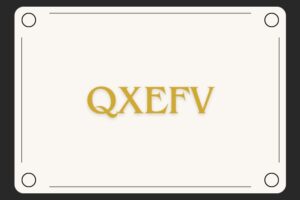Any UX process, if conducted efficiently, assists in creating intuitive designs with high usability. And there are many reasons why you should start the UX design of your product from the discovery phase. The #1 reason is that it helps to shape the right vision of the product and unite all the participants around a common vision.
Even though it requires meticulous and extensive research about the users and their behavior towards certain products. A project discovery phase is the main part of the UX design services that are always aligned with creative direction, scope & technical details, and full team involvement.
Let’s take a closer look at what a project discovery phase is and analyze why it is important for highly efficient UX design processes.

Table of Contents
What is the project discovery phase in UX development?
Despite the fact that in UX development, a discovery phase is more of the preliminary stage, it is the most important one! A well thought out project discovery phase does the following:
- collects detailed info about the product
- identifies end-users
- explores every aspect of the ongoing project
These steps help to identify and frame any potential problem(s) and signify opportunities to determine what the most effective solutions are. In other words, the UX discovery session targets the most effective resolutions by gaining insights sufficient to key milestones needed to get the project off the ground and get it started.
The discovery phase can last from a couple of days to several weeks linking the product owner to the development team. This keeps the client and development team on the same page from the very 1st day. This process helps to ensure that the client and team have the same vision regarding the product and coordinates the next phase step-by-step.
What are the main goals of the discovery phase?
A typical UX process conducted by SolveIt team loops through the following steps:
Learn: team focuses on user goals, business goals, client’s goals, etc.
Ideate: team starts from creating choices and works its way out to narrowing them down to actually making the right choices.
Design: team develops detailed prototypes or hi-res mocks for testing.
Validate: teams validates the UX design + defines the project’s post-launch KPIs.
How do UX designers approach the discovery phase of a project?
Ideally, UX designers keep on gaining insights about the product by putting themselves in the user’s shoes before making any decision. And while there’re many models and practices in the UX world, there’s a simple version of them which can be put in a set of questions that all start with “Why”:
- Why do we do this?
- Why does it matter?
- Why do we think this will work?
- Why is it important to the user?
- Why is this the best solution?
Finding the right answers to those questions helps to clear foggy thoughts, sharpen reasons, and minimize risks and assumptions.
What are the steps of the project discovery phase in the UX design?
The UX methods include interviews, surveys, prototyping, analysis of usage metrics, A/B studies, etc are applied to get as much information about the forces driving the design as quickly as possible. The following steps can be accelerated, but not skipped in the discovery phase:
Identifying what problems this product will solve for the potential customers.
Doing the market & user research. At this point, UX designers study the competitors to find out their weak and strong sides. This is essential for understanding which features are needed to be integrated into the app.
Researching the latest UI/UX trends. This step helps to define the target audience of the future product and create a user persona.
Creating a sketch. Now it’s time to sum up all the data received on the previous stages and create a mock-up of the product UX.
Designing the product. After the sketches are approved, the actual design & development process starts.
Introducing the design. On this stage, the design that’s been created goes live to the broad audience.
Usability testing. When the product is launched, UX designers collect feedback about it from real users. For that, a usability testing service can be used where real people will test the product and share their honest opinion about it. It helps to identify any flaws and correct them in the early stages of the product development process.
Wrapping-up
UX design is all about managing constraints like project’s budget, timeline, resources, client vs. user expectations, technology, culture, market forces, etc. All of these things are forces that drive the UX design. So, if the clients can’t or are not willing to take the time to completely and fully understand what they are building (and why), the consistent results can not be delivered.
On the other hand, some organizations may skip the project discovery phase to get the product to market as early as possible. In turn, such an approach increases the risks of running into hidden complexities and technical hurdles late in the process. Or delivering features that are of little value to end-users.
Design services at SolveIt always start with an established blueprint that certainly works and has a proven track record. This blueprint becomes a major accelerator which helps to move through the process quickly.



